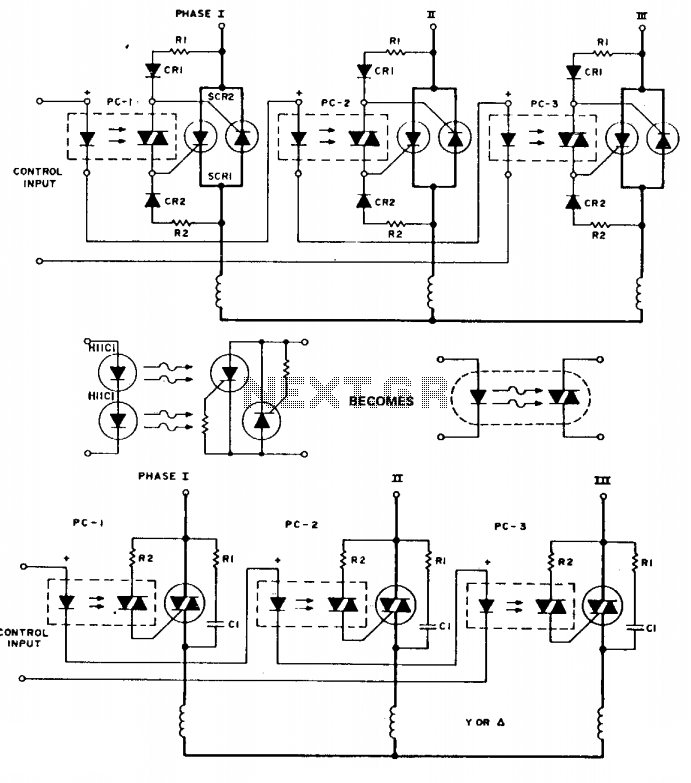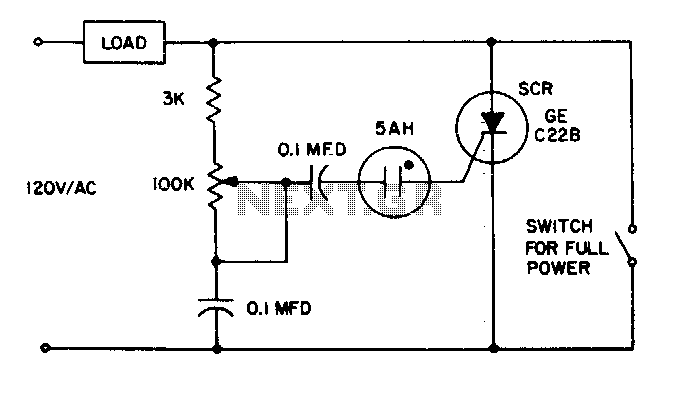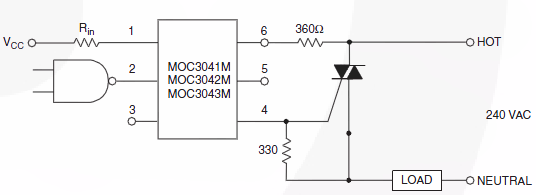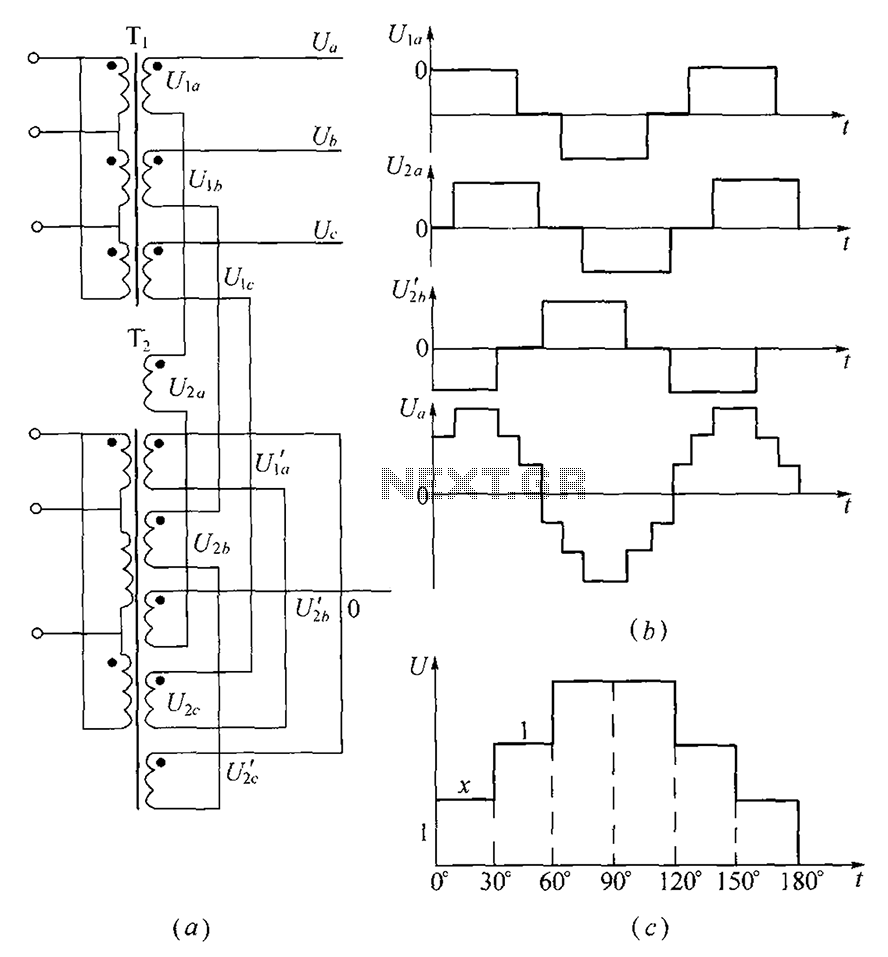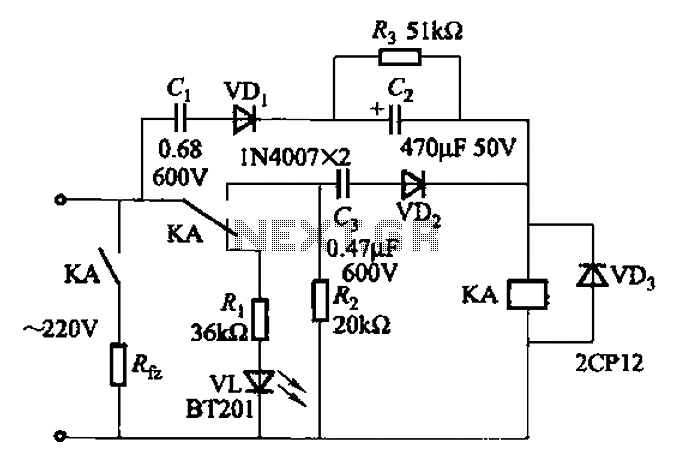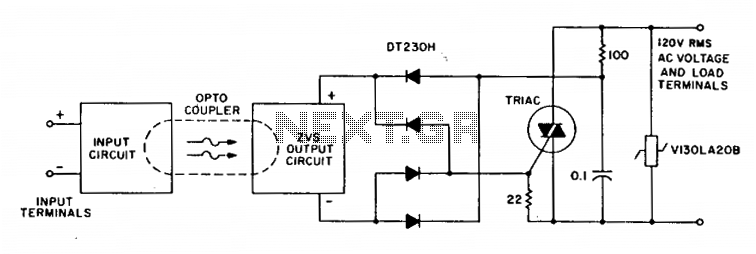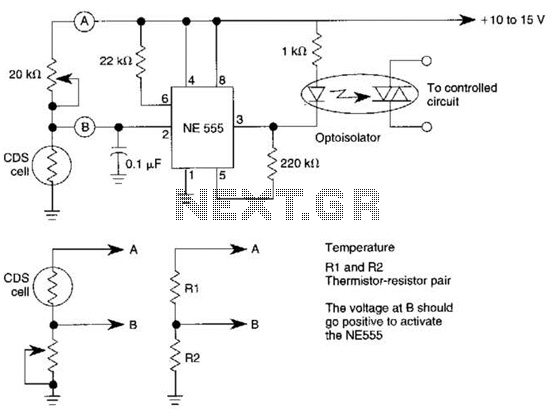
Phase solid state relay fault protection circuit b
#solid state relay
#three-phase
#AC
#phase failure
#protection
#monitoring
#control
#SSPORR
#semiconductor
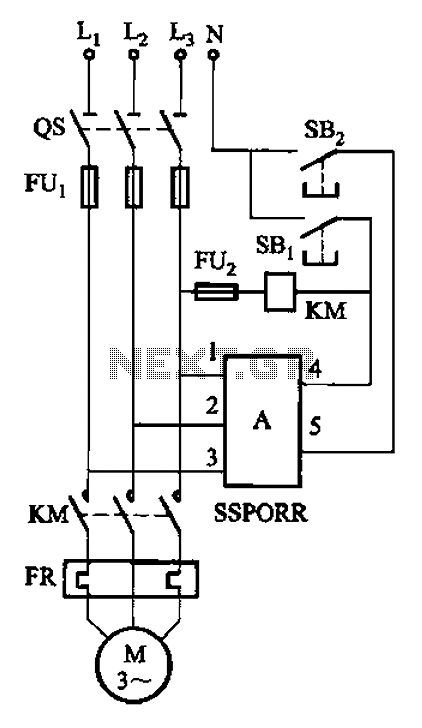
Description: The solid-state phase failure relays for three-phase AC phase failure monitoring, protection, and control of new devices are referred to as SSPORR. This module consists of a five-terminal semiconductor configuration. Terminals 1, 2, and 3 serve as the three-phase monitoring input terminals. The module is designed to handle any phase sequence and absorbs minimal current, not exceeding a total of three terminals at 1 mA. Terminals 4 and 5 function as the switching outputs. Key features of the module include a wide operating range, absence of fire and jitter, and the ability to withstand surge currents. Under normal power supply conditions, terminals 4 and 5 conduct. However, when a phase failure occurs, terminals 4 and 5 will deactivate, cutting off the protection and control switch. The phase protection circuit, illustrated in Figure 4-38, indicates that when one phase of the power supply is lost, the output of the SSPORR is cut off, resulting in no voltage output. This action causes the contactor KM to release, thereby stopping the motor.
The SSPORR module operates by continuously monitoring the three-phase input for any discrepancies in voltage levels. It is essential for applications where motor protection is critical, as it ensures that the motor does not operate under phase failure conditions, which could lead to overheating and potential damage. The semiconductor design allows for rapid response times to phase loss, ensuring that the output is immediately cut off upon detection of an anomaly.
The module is typically integrated into motor control circuits, where it interfaces with contactors and overload relays. The switching outputs (terminals 4 and 5) can be connected to a control relay that activates or deactivates the motor circuit based on the status of the phase inputs. This ensures that the motor remains protected during phase imbalances or failures.
In addition to its protective features, the SSPORR module is designed to operate over a broad range of supply voltages, making it suitable for various industrial applications. Its robust construction and ability to handle surge currents further enhance its reliability in demanding environments. The absence of mechanical components also means that the module is less prone to wear and tear, providing a longer lifespan compared to traditional electromechanical relays.
Overall, the SSPORR solid-state phase failure relay is a vital component in modern motor control systems, ensuring safety and efficiency in operations by preventing damage due to phase failures.38. The solid state phase failure relays for three-phase AC phase failure monitoring, protection and control of new devices, referred SSPORR. It is only a five endpoints semico nductor module, wherein: 1,2,3 the end of the three-phase monitoring input terminal. Any phase sequence, absorb very little current, not exceeding a total of three-terminal ImA; 4,5-side switching end. Features of the module are: wide operating range, no fire flower and jitter, surge current capacity. When the power supply is normal, 4,5 end the conduction; when phase, 4,5 end deadline, Paul protection and control switch is turned off.
Phase protection circuit from a solid phase failure relays in Figure 4-38. When one phase power supply, the output of SSPORR cut-off, no voltage output, contactor KM release, the motor stops.
The SSPORR module operates by continuously monitoring the three-phase input for any discrepancies in voltage levels. It is essential for applications where motor protection is critical, as it ensures that the motor does not operate under phase failure conditions, which could lead to overheating and potential damage. The semiconductor design allows for rapid response times to phase loss, ensuring that the output is immediately cut off upon detection of an anomaly.
The module is typically integrated into motor control circuits, where it interfaces with contactors and overload relays. The switching outputs (terminals 4 and 5) can be connected to a control relay that activates or deactivates the motor circuit based on the status of the phase inputs. This ensures that the motor remains protected during phase imbalances or failures.
In addition to its protective features, the SSPORR module is designed to operate over a broad range of supply voltages, making it suitable for various industrial applications. Its robust construction and ability to handle surge currents further enhance its reliability in demanding environments. The absence of mechanical components also means that the module is less prone to wear and tear, providing a longer lifespan compared to traditional electromechanical relays.
Overall, the SSPORR solid-state phase failure relay is a vital component in modern motor control systems, ensuring safety and efficiency in operations by preventing damage due to phase failures.38. The solid state phase failure relays for three-phase AC phase failure monitoring, protection and control of new devices, referred SSPORR. It is only a five endpoints semico nductor module, wherein: 1,2,3 the end of the three-phase monitoring input terminal. Any phase sequence, absorb very little current, not exceeding a total of three-terminal ImA; 4,5-side switching end. Features of the module are: wide operating range, no fire flower and jitter, surge current capacity. When the power supply is normal, 4,5 end the conduction; when phase, 4,5 end deadline, Paul protection and control switch is turned off.
Phase protection circuit from a solid phase failure relays in Figure 4-38. When one phase power supply, the output of SSPORR cut-off, no voltage output, contactor KM release, the motor stops.
